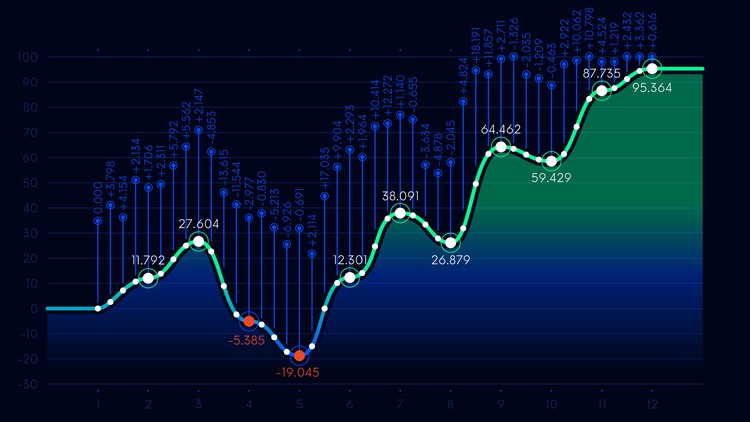
Artificial intelligence, Backtesting, optimization for algorithmic trading with MetaTrader 5. Bot included
What you will learn
Create a algorithmic trading strategy based on deep learning algorithms
Put any algorithm in live trading using MetaTrader 5 and Python
Manage financial data using Numpy, Pandas and Matplotlib
Data cleaning using Pandas
Python programming
Deep learning implementation using TensorFlow 2.0
Understand and implement the Deep Neural Networks (DNN)
Understand and implement the Recurrent Neural Networks (RNN)
Import stock price from Yahoo Finance and from your broker
Description
You already know python, and you want to monetize and diversify your knowledge?
You already have some trading knowledge, and you want to learn about artificial intelligence in algorithmic trading?
You are simply a curious person who wants to get into this subject?
If you answer at least one of these questions, I welcome you to this course. For beginners in python, don’t panic! There is a python course (small but condensed) to master this python knowledge.
In this course, you will learn how to program strategies from scratch. Indeed, after a crash course in Python, you will learn how to implement a system based on Deep Learning (Deep neural network, Recurrent neural network).
Once the strategies are created, we will backtest them using python. So that we know better this strategy using statistics like Sortino ratio, drawdown the beta… Then we will put our best algorithm in live trading.
You will learn about tools used by both portfolio managers and professional traders:
- Artificial intelligence algorithm
- Apply Deep Learning in Live Trading
- Predict stock prices using Deep Learning
- Live trading implementation
- Import financial data using MetaTrader 5 or Yahoo finance
- DNN Algorithm
- RNN algorithm to analyze and predict time series behavior
- How to do a backtest a strategy using the programming language Python
- Numpy, Pandas, Matplotlib
- Sharpe, Sortino ratios
- Alpha, Beta coefficients
Why this course and not another?
- It is not a programming course nor a trading course. It is a course in which programming is used for trading.
- A data scientist does not create this course, but a degree in mathematics and economics specialized in Machine learning for finance.
- You can ask questions or read our quantitative finance articles simply by registering on our free Discord forum.
Without forgetting that the course is satisfied or refunded for 30 days. Don’t miss an opportunity to improve your knowledge of this fascinating subject.
Content